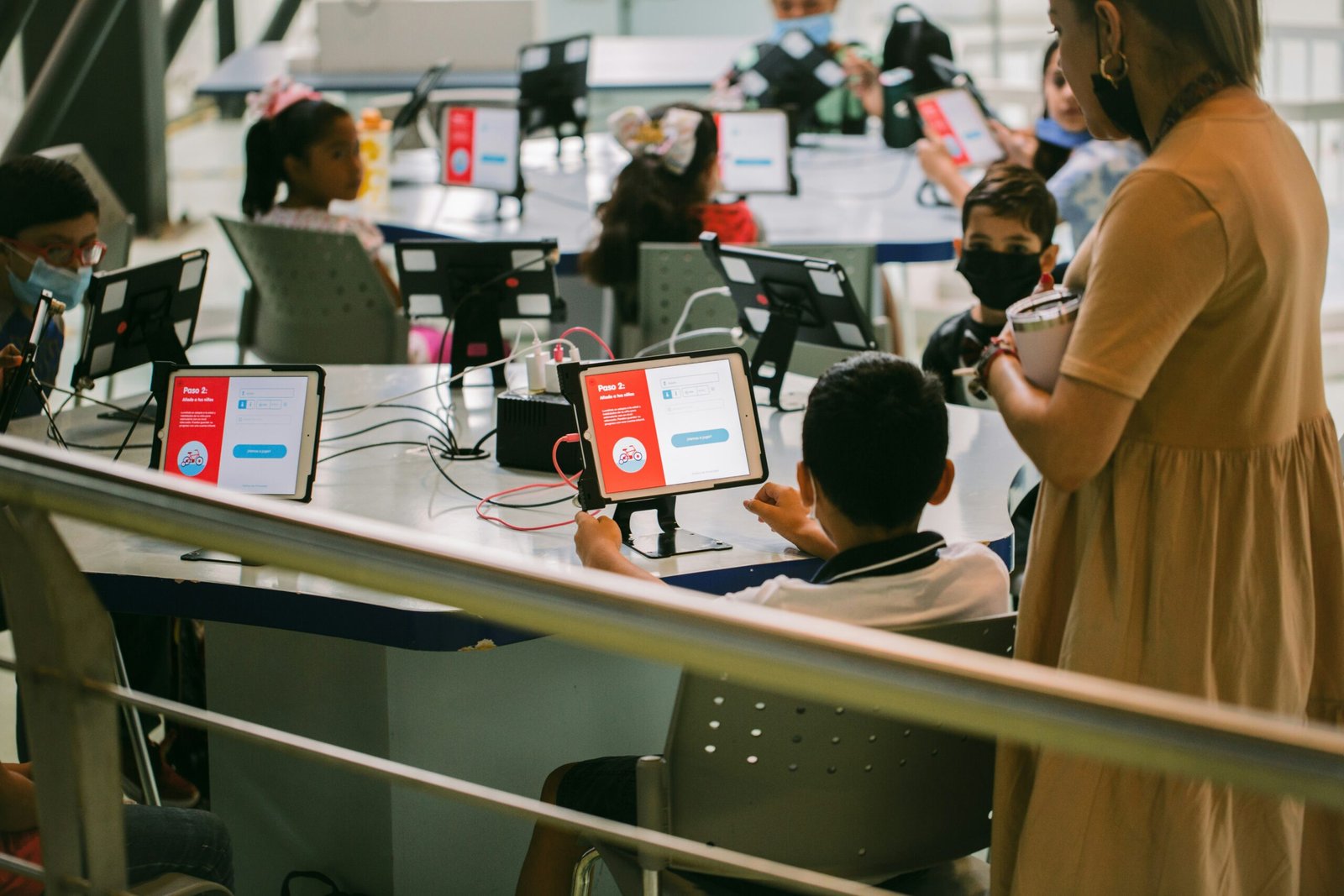Introduction to EdTech Adoption
Educational technology, commonly referred to as EdTech, encompasses a wide range of tools and resources designed to enhance learning experiences and improve educational outcomes. This field integrates technology within the educational process, spanning various applications like digital learning platforms, online course management systems, interactive content, and collaborative tools that facilitate communication between educators and students. The significance of EdTech in modern education cannot be overstated, as it reshapes how instruction is delivered and how learners engage with content.
In recent years, the evolution of EdTech has been marked by rapid technological advancements and a growing demand for more interactive, personalized learning environments. With the advent of high-speed internet, mobile devices, and cloud computing, educational institutions are increasingly leveraging these innovations to democratize access to quality education. The global pandemic further accelerated this trend, prompting a sudden shift to remote learning and necessitating the adoption of various digital tools to maintain educational continuity.
Several driving forces contribute to the rising adoption of EdTech across different regions. These factors include the need for scalability, improved learner engagement, and the quest to address educational disparities. Policymakers and educational leaders are recognizing the importance of adopting technology to foster an inclusive and efficient learning ecosystem. Understanding global trends in EdTech is crucial for educators, institutions, and policymakers, as it provides valuable insights into how to effectively integrate technology to enhance learning experiences and meet the evolving needs of students.
The insights garnered from recent surveys can inform practitioners and stakeholders about current trends, enabling them to make informed decisions regarding the deployment of educational technologies. Such understanding not only aids in effective planning but also promotes the sustained growth and impact of EdTech solutions worldwide.
Key Findings from Global Surveys
The global landscape of educational technology (EdTech) adoption has undergone significant transformations, as revealed through extensive surveys conducted across various regions. A noteworthy finding is that approximately 70% of educational institutions reported integrating some form of EdTech tools into their curricula. This widespread adoption indicates a growing recognition of the benefits technology brings to learning environments, particularly in enhancing accessibility and engagement.
Among the popular EdTech solutions, learning management systems (LMS) emerged as the frontrunners, with about 58% of institutions utilizing them for course delivery and management. Other widely adopted technologies include online assessment tools, webinars, and collaborative platforms, reflecting a shift towards interactive and adaptable learning models. These technologies not only support traditional educational methods but also promote personalized learning experiences, catering to diverse student needs.
Geographical variations in EdTech adoption rates are significant. Regions such as North America and Western Europe led in integration percentages, with upwards of 80% of schools incorporating various digital tools. In contrast, regions like Sub-Saharan Africa and parts of Asia exhibited lower adoption rates, averaging around 40%. These disparities highlight the technological gap and raise concerns regarding equal access to quality education.
However, the journey towards broader EdTech acceptance is not devoid of challenges. Factors such as limited infrastructure, insufficient training for educators, and resistance to change hinder the progress in various communities. Surveys indicate that approximately 45% of institutions cite budget constraints as a primary barrier, inhibiting their ability to adopt cutting-edge solutions. As educational leaders analyze these findings, it becomes essential to develop tailored strategies that address these challenges, ensuring that EdTech can elevate learning experiences globally.
Impact of EdTech on Learning Outcomes
The integration of educational technology (EdTech) into learning environments has been shown to significantly enhance student engagement, retention, and academic performance. Various studies have illustrated that when technology is effectively incorporated into the curriculum, it can lead to improved learning outcomes. For example, platforms such as interactive learning software and online resources allow for personalized learning experiences, meeting students’ individual needs and adapting to their unique learning paces.
Research indicates that students using EdTech tools experience a more engaging learning environment. A case study conducted in a high school setting demonstrates that students participating in a blended learning model, which combines traditional classroom experiences with online learning resources, reported higher levels of motivation and interest in their studies. This engagement is often attributed to the use of gamified elements and interactive content, which can make the learning process more enjoyable and effective.
Furthermore, the incorporation of online assessments and analytics enables educators to track student progress more closely. By analyzing performance data, teachers can identify areas where students struggle and adjust their pedagogical approaches accordingly. This data-driven strategy not only fosters a better understanding of student needs but also contributes to higher retention rates as learners feel more supported in their educational journeys.
Despite these advantages, educators face challenges in deploying EdTech effectively. Issues such as the digital divide—where some students lack access to necessary devices or reliable internet—pose significant barriers to equitable learning outcomes. Additionally, improper training on the usage of EdTech tools can hinder not just student performance but also staff confidence in integrating these technologies. This highlights the need for comprehensive professional development to ensure that educators are well-equipped to harness the benefits of EdTech while addressing potential limitations.
Future Directions and Predictions for EdTech
The landscape of educational technology (EdTech) is continuously evolving, shaped by various factors including technological advances, policy reforms, and changing demographics among learners. As we look to the future, several pivotal trends can be anticipated, which are likely to influence the way EdTech is adopted and integrated into educational systems worldwide.
One significant trend is the increasing integration of artificial intelligence (AI) in educational tools. AI-driven platforms are expected to personalize learning experiences by tailoring content to individual student needs and learning paces. This personalization not only facilitates better engagement but also addresses diverse learner requirements, thus promoting inclusivity. Furthermore, the adoption of AI could streamline administrative tasks for educators, allowing them to focus more on teaching rather than management.
Additionally, the rise of remote and hybrid learning environments has underscored the importance of robust technological infrastructures. As schools and universities embrace these models, the demand for high-quality digital resources and platforms will increase. This shift will likely trigger investments in EdTech solutions that support synchronous and asynchronous learning, ensuring that all students have equal access to educational opportunities regardless of their location.
Simultaneously, educational policies are expected to adapt to the changing landscape. Policymakers may prioritize the creation of guidelines that promote the effective integration of EdTech in curricula, as well as emphasize the need for continuous professional development for educators. By equipping teachers with the necessary skills to utilize emerging technologies, educational institutions can improve teaching practices and enhance student learning outcomes.
Lastly, as learner demographics shift, with an increasing number of digital-native students entering the education system, there will be greater expectations for interactive and engaging learning experiences. The successful integration of EdTech will hinge on understanding these demographics and adapting educational practices to meet their needs. Thus, a proactive stance is crucial for educators and institutions aiming to leverage the full potential of technology in education.










